Once the first granary in Taipei, No.1 Food Theater is a farm-to-table restaurant in Songshan District (松山) that may well be “No.1” in fusion and innovation too.
The granary was repurposed as a restaurant in 2013, 68 years after its construction. While the exteriors and interiors have been renovated, the building’s high ceiling remains. Its first floor retails the best of local organic produce; its second floor houses the restaurant.
Amid the wooden furniture, over-sized ceiling fans, stone walls subtly scarred by bullet holes and brightly-lit ambiance marked by black barn lights, shopping and dining here is truly a step back in time — I could almost smell the aroma of the rice once housed in the granary.
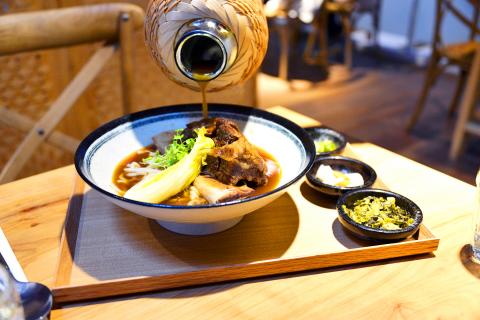
Photo: George Lee
The chefs are not shy about differentiating their cuisine from the norm. You almost think you know what to expect, being familiar with Asian-American fusion food, but the first dish arrives and throws your tastebuds an uppercut.
Beef short rib noodles (NT$780) are the restaurant’s signature dish. Six-day slow-cooked 425g bone-in short rib sits proudly atop a bed of thick, firm, tangy hand-pulled noodles, beside half a Chinese baby cabbage. The smoky, smooth broth is poured straight from a basket-like jar, evoking a rustic quality. The tender beef fell right off the bone as I bit into it — totally expected, but so satisfying every time.
The risotto (NT$420), dubbed “Local Champion,” exudes a familiar briny fragrance. Taitung rice, diced Taichung taro, pickled Miaoli mustard greens, sweet shrimp, scallops and squid are all cooked al dente in shrimp head broth and topped with chopped chives.
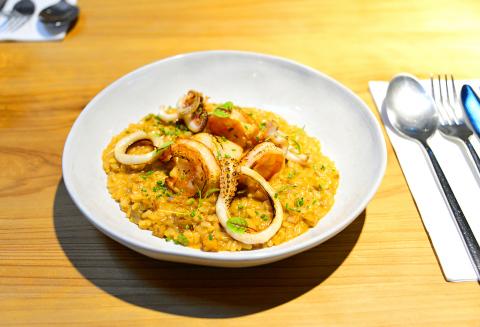
Photo: George Lee
The smell was reminiscent of the air in a fish market — I personally enjoyed that, although some might find it overwhelming.
I didn’t think I could be more impressed, but the dishes that followed proved otherwise. A curry of oxtail and beef cheek (NT$299), influenced by Japanese, Thai and South Asian cuisine, is braised in red wine and served alongside a garden of potatoes, crisp broccoli, bamboo and beef tomato. While its heat is mild for a curry, the intense flavor demands a healthy serving of white rice, which is dutifully provided.
The XO sauce linguine (NT$420), spicy but not too much so, is tossed with buttery pan-seared scallops and olive oil, mildly scented with garlic chips and fresh herbs. It’s assertive, forthright and a must-order for XO sauce fanatics.
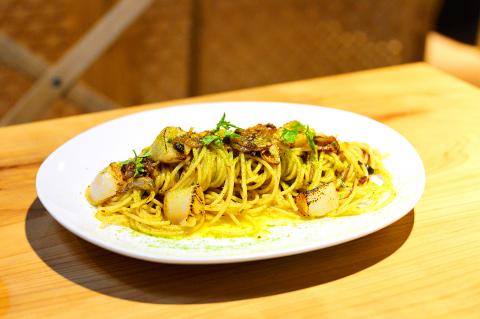
Photo: George Lee
Arguably the most distinctive dish is the mushrooms and squid (NT$320). Thick cuts of red and yellow bell peppers, mushrooms and squid rings, juxtaposed with golden-brown deep-fried burdock strips, are a piquant Western twist on the traditional Taiwanese three-cup sauce of rice wine, soy sauce and sesame oil. Eating this dish convinced me that three-cup sauce might just pair better with seafood.
The food is almost too rich and hearty, but then there’s the cool, refreshing No.1 Food Theater salad (NT$380). Boasting each day’s freshest produce, you will not recognize this salad the next time you have it. The dressing stood out to me — the mixture of peanut oil and honey oat vinegar cuts through every bite with fat and acidity.
Finally, for dessert, the chef’s special (NT$280) consists of French toast and caramelized banana laden with cream, perfumed with coconut butter and chili pepper and sprinkled with hazelnuts. I couldn’t have been happier to find such a harmony between the savory sweetness of the toast and the fiery chili pepper flakes.
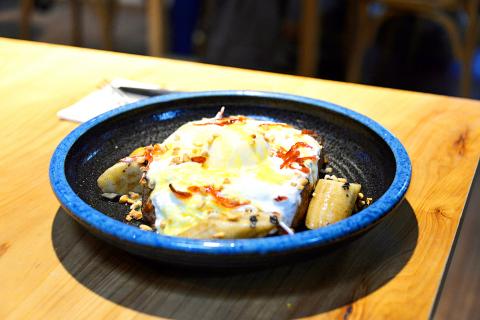
Photo: George Lee
The cooking at No.1 Food Theater is confident and whimsical, and the atmosphere is convivial. The chefs here really showcase how simple ingredients and homespun recipes, too, can have swanky flair.
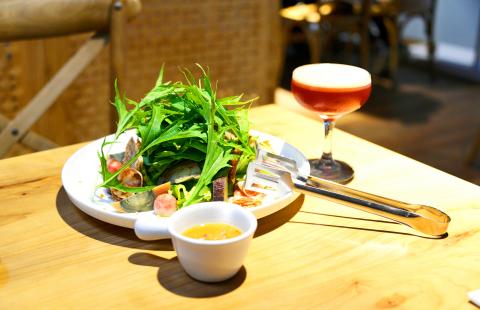
Photo: George Lee
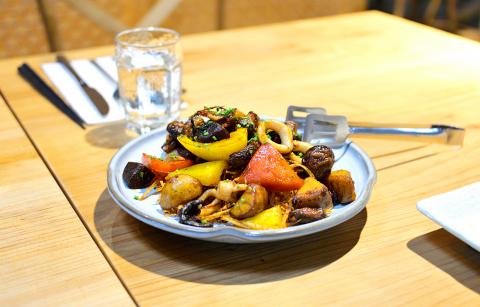
Photo: George Lee

On the evening of June 1, Control Yuan Secretary-General Lee Chun-yi (李俊俋) apologized and resigned in disgrace. His crime was instructing his driver to use a Control Yuan vehicle to transport his dog to a pet grooming salon. The Control Yuan is the government branch that investigates, audits and impeaches government officials for, among other things, misuse of government funds, so his misuse of a government vehicle was highly inappropriate. If this story were told to anyone living in the golden era of swaggering gangsters, flashy nouveau riche businessmen, and corrupt “black gold” politics of the 1980s and 1990s, they would have laughed.
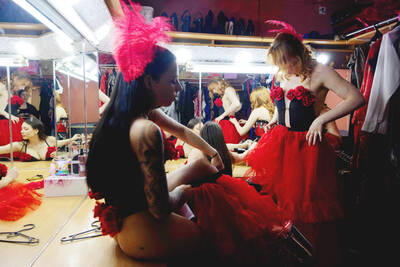
When Lisa, 20, laces into her ultra-high heels for her shift at a strip club in Ukraine’s Kharkiv, she knows that aside from dancing, she will have to comfort traumatized soldiers. Since Russia’s 2022 invasion, exhausted troops are the main clientele of the Flash Dancers club in the center of the northeastern city, just 20 kilometers from Russian forces. For some customers, it provides an “escape” from the war, said Valerya Zavatska — a 25-year-old law graduate who runs the club with her mother, an ex-dancer. But many are not there just for the show. They “want to talk about what hurts,” she

It was just before 6am on a sunny November morning and I could hardly contain my excitement as I arrived at the wharf where I would catch the boat to one of Penghu’s most difficult-to-access islands, a trip that had been on my list for nearly a decade. Little did I know, my dream would soon be crushed. Unsure about which boat was heading to Huayu (花嶼), I found someone who appeared to be a local and asked if this was the right place to wait. “Oh, the boat to Huayu’s been canceled today,” she told me. I couldn’t believe my ears. Surely,

This is a deeply unsettling period in Taiwan. Uncertainties are everywhere while everyone waits for a small army of other shoes to drop on nearly every front. During challenging times, interesting political changes can happen, yet all three major political parties are beset with scandals, strife and self-inflicted wounds. As the ruling party, the Democratic Progressive Party (DPP) is held accountable for not only the challenges to the party, but also the nation. Taiwan is geopolitically and economically under threat. Domestically, the administration is under siege by the opposition-controlled legislature and growing discontent with what opponents characterize as arrogant, autocratic